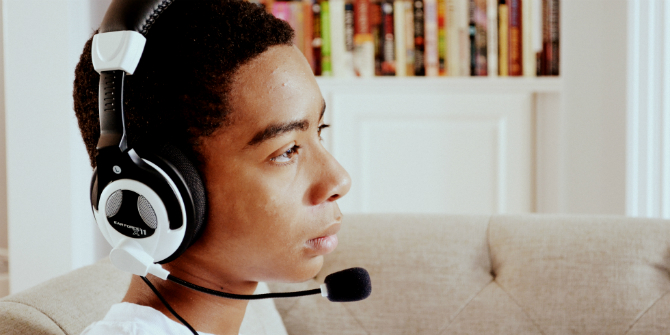As we prepare to break for the Easter holidays, we take a look back at our posts so far this year. [Header image credit: E. Tjallinks-CC-BY-NC-SA-2.0]
Children’s rights and privacy
Once more the rights of the child and the protection of their privacy online have been key concerns. Last week, we reflected on the 30th Anniversary of the UN Convention on the Rights of the Child and asked whether it fits the digital age, particularly when there have been huge data breaches of children’s data. The post includes an invitation to respond to the OHCHR consultation, closing on 15 May. A new ICO-funded report, to coincide with Data Privacy Day in January, discussed children’s understandings of privacy and consent online. The report also considered the implications for children’s rights, and gave recommendations for how to improve children’s digital privacy skills. Research by EU Kids Online revealed that while children might understand concepts such as privacy, they still often lack practical digital skills for safeguarding such privacy. For those who want to read more about these urgent issues, see our summary of key readings on children’s data and privacy online.
Safety: identifying the gaps and improvements
Closely related to concerns over children’s privacy were debates surrounding how to keep children safe online amidst cyberbullying, self-harm and fake news on social media. We discussed how schools might use the UK Council of Child Internet Safety’s framework to teach children not only about the opportunities of the internet but how to use it more safely, responsibly and securely. The importance of combining such education in schools with conversations at home, as media use becomes increasingly individualised was also discussed as we marked Safer Internet Day. We discussed how inequalities offline can significantly affect safety online, and considered how online safety education can be improved as a result. The launch of the UK Chief Medical Officer’s report on screen-time and the impact it may be having on children’s mental health raised issues of how to protect children from such risks while also taking a measured approach. Finally, on a more positive note we outlined several improvements in children’s safety that occurred in 2018. Many of these developments have fed into the Government’s new White Paper on Online Harms, about which we shall be blogging in the coming months.
Inequalities: shaping opportunities online and offline
Several posts noted how social inequalities have an impact on children’s opportunities, safety and risks online. Parenting for a Digital Future released its fourth report, on how inequalities such as gender, ethnicity, disability and socio-economic status in the home influence children’s digital lives and affect how much support parents can give children. For example the report found that children who had special educational needs or disabilities were much more like to suffer harm online, according to parents, and asked how such families might be better supported. One organisation described how its scheme has provided lower income parents with disabled children with tablets and training on how to use them. Two posts took into account of how gender inequalities were significant in shaped use of digital media. A major US study by Plan International showed that there was a relationship between parents’ attitudes towards gender and teens’ engagement in sexualized media practices and harassment online. Ethnographic research in rural India also revealed how gendered power dynamics within family structures are being actively shaped and reshaped through the use of mobile phones. We also looked at how teens are moving away from using Facebook and asked what the implications might be for political engagement and class inequalities.
Facing the future
Finally several posts took a look ahead to consider future developments in digital technology. One considered how play might be able to transform how learning is measured in schools by moving away from traditional testing. The ICT Coalition for Children Online’s report asked Europe’s industry experts, parents and young people about emerging tech and the potential threats and opportunities it poses. We also looked at what needs to happen next to ensure the goal of better media literacy is achieved and sustained in the future. Finally, we’re now finishing writing our book, ‘Parenting for a Digital Future,’ and will blog about it more in the coming weeks.
Keep your eye out for our new-look blog, which will be launched soon.
You can stay up to date with our research and new project updates by subscribing to the blog, and by following Sonia and Alicia on Twitter.





